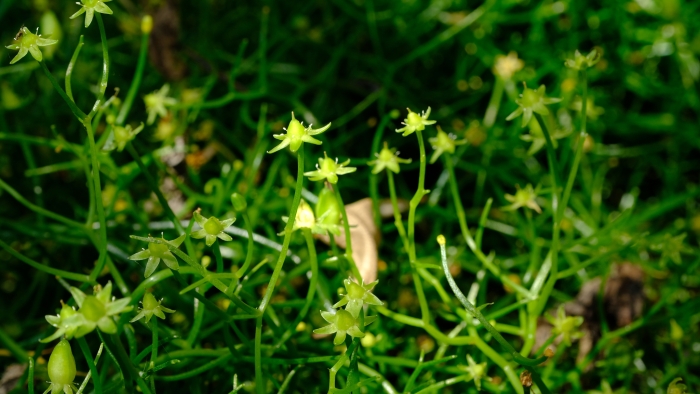Climbing Onion
(Bowiea volubilis)
Climbing Onion (Bowiea volubilis)
/
/

Nick Helme
CC BY-SA 4.0
Image By:
Nick Helme
Recorded By:
Copyright:
CC BY-SA 4.0
Copyright Notice:
Photo by: Nick Helme | License Type: CC BY-SA 4.0 | License URL: http://creativecommons.org/licenses/by-sa/4.0/ | Rights Holder: Nick Helme | Publisher: iNaturalist | Date Created: 2021-04-05T10:06:13-07:00 |















Estimated Native Range
Summary
Bowiea volubilis, commonly known as the Climbing Onion, is a perennial succulent native to semi-arid regions, rocky outcrops, and bushveld in eastern and southern Africa. It is deciduous, with a unique growth form featuring a large, pale green, spherical bulb that can reach up to 8 inches in diameter. The bulb sits at soil level or slightly above, and from it emerges a fast-growing, twining stem that can extend several feet and requires support. During the spring, the plant produces small, inconspicuous greenish-white flowers that are not particularly showy. After flowering, it may produce small capsules containing winged seeds.
The Climbing Onion is valued for its unusual bulb and vigorous, vine-like growth, making it a conversation piece in a collection of succulents or as a potted houseplant. It is often used in cultivation for its adaptability to container life and the architectural interest it adds to indoor and outdoor settings. Bowiea volubilis thrives in gritty, well-drained soil and prefers partial sun to light shade. It requires regular watering during the active growing season but should be kept mostly dry during its dormancy period in the winter to prevent rot. Propagation is typically achieved through seed, divisions, or individual bulb scales. While generally pest-free, it can be susceptible to mealybugs and scale insects. Overwatering is a common issue, leading to bulb rot, so careful attention to watering is crucial.CC BY-SA 4.0
The Climbing Onion is valued for its unusual bulb and vigorous, vine-like growth, making it a conversation piece in a collection of succulents or as a potted houseplant. It is often used in cultivation for its adaptability to container life and the architectural interest it adds to indoor and outdoor settings. Bowiea volubilis thrives in gritty, well-drained soil and prefers partial sun to light shade. It requires regular watering during the active growing season but should be kept mostly dry during its dormancy period in the winter to prevent rot. Propagation is typically achieved through seed, divisions, or individual bulb scales. While generally pest-free, it can be susceptible to mealybugs and scale insects. Overwatering is a common issue, leading to bulb rot, so careful attention to watering is crucial.CC BY-SA 4.0
Plant Description
- Plant Type: Succulent, Bulb
- Height: 1-2 feet
- Width: 1-2 feet
- Growth Rate: Slow, Moderate
- Flower Color: Green, White
- Flowering Season: Spring, Summer
- Leaf Retention: Deciduous
Growth Requirements
- Sun: Full Sun, Part Shade
- Water: Low, Medium
- Drainage: Fast, Medium
Common Uses
Low Maintenance, Potted Plant, Rock Garden
Natural Habitat
Semi-arid regions, rocky outcrops, and bushveld in eastern and southern Africa
Other Names
Common Names: Sea Onion, Climbing-Potato, Zulu-Potato
Scientific Names: , Bowiea volubilis, Aloe volubilis, Bowiea gariepensis, Ophiobostryx volubilis, Schizobasopsis volubilis,
GBIF Accepted Name: